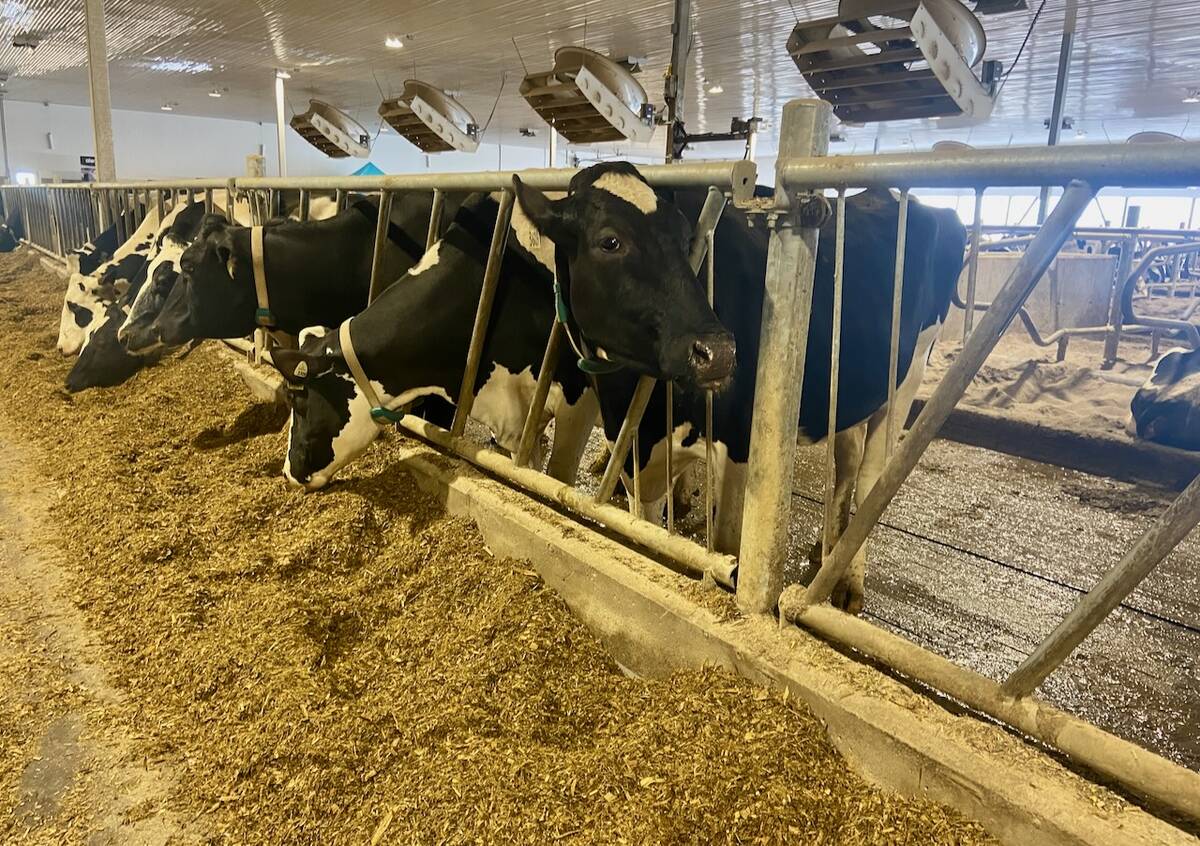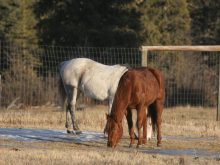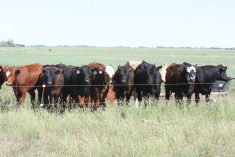In many cattle operations, the biggest problem is keeping calves healthy during the first two months of life, or until they are processed for pasture.
When checking the performance of young calves, watch for clinical signs that they may need attention and be ready to treat them.
By taking the animal’s temperature, producers can better determine whether treatment is warranted. As well, checking temperature following treatment can help producers learn whether there has been a response.
I prefer to catch younger calves with the calf hook. I usually have treatments pre-drawn so they are ready and treatments can be quickly delivered. Also, in clinical practices these days, we use NSAIDs for many different conditions and that will probably be no different for young calves. Your veterinarian will give you a protocol.
Read Also

U.S. farm group supports supply management
U.S. grassroots farm advocacy group pushing new agriculture legislation that would move towards supply management like Canada has for dairy industry
I put calf diseases into four categories:
Respiratory diseases
By using intranasal vaccines, having warm, dry creep areas for calves and by keeping cow-calf pairs in smaller groups, we can minimize respiratory diseases. If you see slightly droopy ears, depressed calves, noses with mucous and increased respiratory rates, it could indicate a respiratory disease.
In these cases, I use temperature as my guide. It can tell you how bad the infection is but if you have caught the disease very early, temperature may still be within normal limits.
Use your experience and instincts. If you think the calf is sick, you’re probably right. Your veterinarian can recommend the best treatment for pneumonia.
If these calves are slightly dehydrated from lack of sucking, they should be given electrolytes or milk replacer. If the medication takes a while to be effective, fluid replacement can make a big difference in the recovery.
Digestive issues
Scours are another issue to watch for in young calves. Even when herds are vaccinated against scours, calves that are not getting enough colostrum, those that are sick with something else or those that are starving from lack of milk are susceptible.
The big decision is whether to remove the pair from the herd and isolate them, as well as giving large amounts of electrolytes.
The clinical treatment depends on the type of scours. Treatment options include vaccines or medications at birth to try and stop an outbreak.
If you give electrolytes, make sure to disinfect the oral feeder and use a different one on newborns versus scouring calves. We don’t want the feeders to spread the infection.
Also, if treating scouring calves, change coveralls, gloves and other clothing afterward. It is best to attend to newborn calves first and then the sick cattle and then change and dip boots to avoid spreading the disease.
Navel infections
When addressing navel infections, producers must look at hygiene around calving areas. Lots of bedding in the calving grounds and where the cow-calf pairs end up will help prevent the spread of organisms. Bedding is in short supply so use it wisely.
Calves delivered backward can have their navels ripped off short and are prone to infections. Calves delivered by caesarean section are also prone to navel infections.
When you see a calf walking gingerly with an arched back and a larger navel, catch it and check. If it causes the calf pain when you push on the navel, an active infection is present and must be treated.
You should also check into other possible causes, such as an umbilical hernia, or it’s possible the animal just has a large navel and is not infected.
Starving calves
This is the easier problem to solve.
These animals often present slightly more gaunt, they are slower and when it gets cold, hypothermia can set in early.
It is mainly caused by lack of mother’s milk or poor maternal instincts in the cow. Sometimes, these calves fail to develop strong suckle reflexes.
Recognizing these calves and getting them to a place where you can give extra supplementation or get them to suckle on another cow will save their lives.
These calves are also prone to pneumonia or other diseases from stress.
They can be hard to spot. I know of cases in which very experienced producers had not picked up on clinical signs, yet when we autopsied the calf, there were no milk clots in the stomach.
Culling cows with bad udders, big teats and those that wean underweight calves should be considered. We are sometimes surprised at how little milk a heifer is supplying, but older cows, too, can also cause problems and when we strip them out, we find empty or bloody udders. Some of these animals will yet come into milk, but you need to keep an eye on how the calf is doing.
Other calf issues include broken legs, which can generally be repaired with a good prognosis, and intestinal accidents or perforated ulcers, which can cause sudden deaths.
In cases of sudden calf death, get an autopsy to rule out conditions that may be detrimental to the rest of the herd.
Here’s to increasing survivability of calves this spring and keeping the real infectious diseases down to a minimum.
Roy Lewis works as a veterinarian in Alberta.















